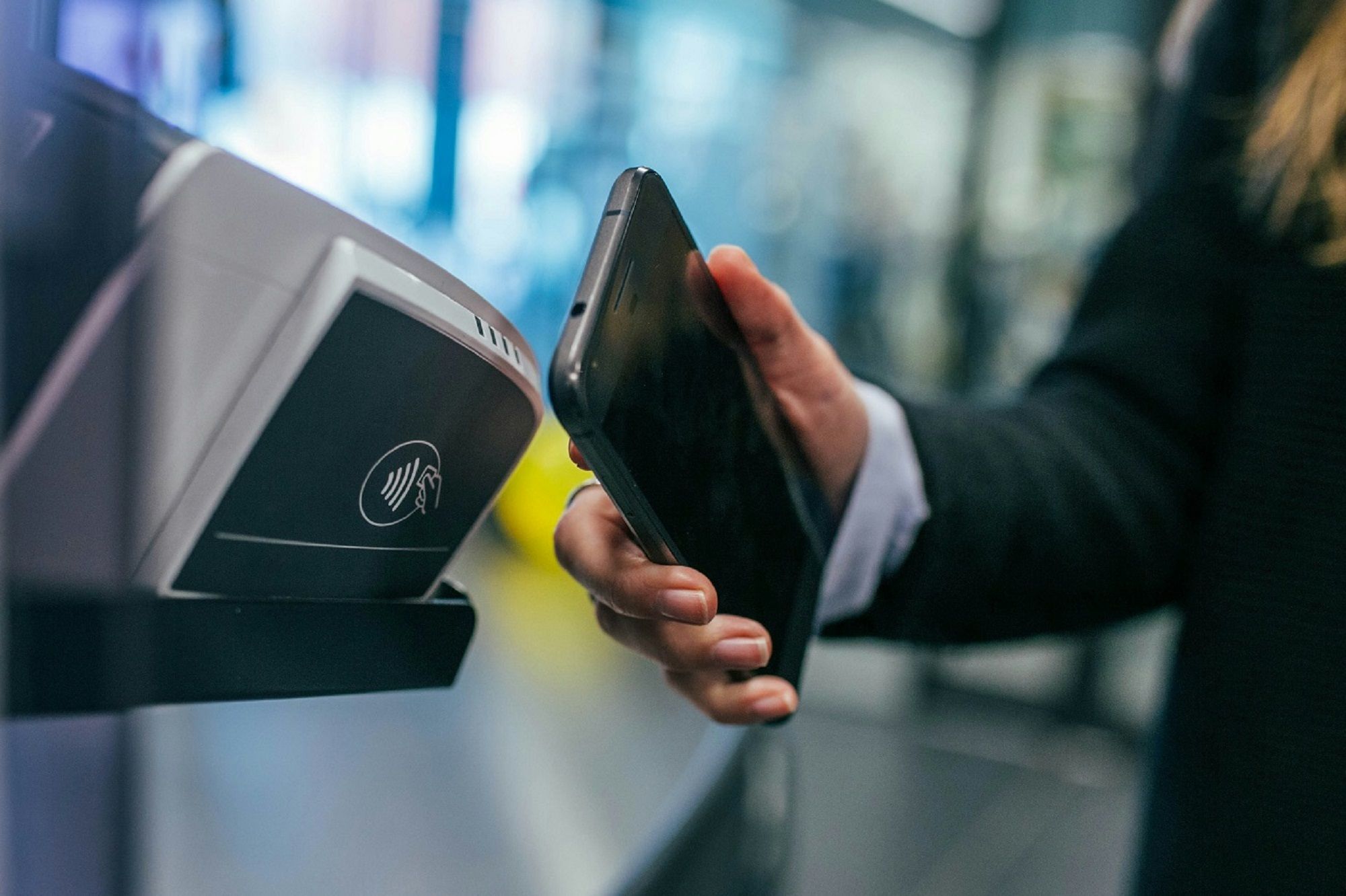- 22 May 2024
- No Comment
- 194
Pakistan’s Digital Dilemma: Unmasking the Staggering Gap Between Lunar Dreams and Ground Realities

From Lunar Dreams to Digital Realities
Pakistan’s leap into space with China, capturing lunar vistas, maybe a moment of national pride, but back home, reality on the ground tells a different story; Pakistan still finds itself trailing behind the world in the digital arena, especially in the public sector, which are still stuck in a bygone era, hinders efficiency, causes service delays, and fosters opportunities for widespread corruption, which ranks the country 133rd globally (out of 180 countries) and affects the efficient rollout of digital initiatives.
Digitising the public sector isn’t just about integrating modern technologies; it’s about revolutionising how our government functions and how services are delivered to every citizen. This transformation is a critical step towards creating a streamlined, transparent, and easily accessible framework for public services—far beyond the simple reduction of paperwork.
According to a report by PwC, embracing digitization could potentially boost Pakistan’s GDP per capita by 3-5% within the next three years. Even more compelling, the McKinsey Global Institute suggests that digital financial services alone could catapult our GDP by 7 percentage points—roughly an additional US$ 36 billion—and generate 4 million new jobs by 2025.
Introduction to Digitization in the Public Sector
Digitization, the process of converting information into a digital format, is more than just a technological upgrade, it’s a comprehensive rethinking of how governments operate, deliver services, and interact with citizens. In Pakistan, a country with a rich history and diverse cultural tapestry, digitization offers a unique opportunity to leapfrog traditional barriers to service delivery and governance.
The current state of technology integration in Pakistan’s public sector reveals a landscape of contrasts. While there have been strides in certain areas, such as the digitization of national identity cards and the introduction of NADRA’s All-in-one kit, which aims to streamline processes, enhance security, and provide efficient services to the public, much of the public sector, including FBR, remains entrenched in outdated processes that hinder efficiency and breed corruption.
According to IGC research, the entire state of Punjab in Pakistan, with a population exceeding 100 million, collects less urban property tax than the Indian city of Chennai, which has around 10 million residents.
Digitising the FBR and minimising direct interaction between taxpayers and tax officials can reduce opportunities for malpractice. It also leaves little to no room for discretionary actions that could lead to under-collection of taxes.
In this series, we will delve into the pressing issues Pakistan faces, starting with the imperative need for digitization. Our journey will also explore the privatisation of public sector entities, strategies to enhance the ease of doing business, efforts to eradicate corruption within government sectors, and the critical digitization of land records.
Global Inspirations: Lessons from Digital Pioneers
Before we delve deeper, let’s take a moment to draw inspiration from global success stories. Countries like Estonia and Denmark offer shining examples of what can be achieved through comprehensive digital transformation.
Estonia: A Digital Wonderland
Estonia has set a gold standard with its digital revolution, making a remarkable leap by offering 99% of its public services online, available 24/7. This shift has led to savings of about 2% of its GDP annually—a testament to the power of a well-executed digital strategy. Imagine the possibilities for Pakistan if we could replicate even a fraction of this success!
Denmark: Pioneering Digital Excellence
Denmark’s journey towards digitization began with a visionary strategy outlined in the “Digital Denmark: Conversion to the Network Society” report back in 1999. This forward-thinking plan focused on lifelong learning, digital administration, and promoting democracy through interactive online services. Today, Denmark stands as a beacon of digital excellence.
Denmark has digitized nearly all of its public services, resulting in an annual savings of 296 million euros ($317.7 million USD)
The country boasts almost universal use of the NemID digital identification tool, the secure Digital Post mailbox platform, and the NemKonto bank account system, which ensures seamless government payments. The Borger.dk portal provides a comprehensive suite of public services, making it remarkably easy for citizens to manage life events. With user friendly mobile apps, Denmark not only delivers functional and reliable e-services but also prioritizes customer experience and engagement.
A Blueprint for Pakistan
For Pakistan, adopting a similar approach to digitization could revolutionize how public services are delivered. Inspired by Denmark’s path, Pakistan can aim to create a digital future that emphasizes efficiency, citizen-centricity, and democratic participation. Imagine a Pakistan where accessing government services is as simple as a few taps on a smartphone, where transparency and accountability are the norms, and where every citizen feels empowered and engaged. This isn’t a far-fetched dream—it’s a realistic goal that we can achieve by learning from the digital pioneers.
Presently, Pakistan remains in the early phases of digital transformation, with limited and primarily basic applications of digital technology. For instance, while some government departments have introduced online services for certain tasks, the overall digitalization efforts are still in their infancy. While the global community explores the possibilities of creating a life in the Metaverse, Pakistan grapples with the challenge of ensuring widespread and dependable digital access for all its citizens. Pakistan’s stagnant progress has widened the gap between other countries that have adeptly utilized digital technologies to propel their socio-economic advancement.
Strategic Initiatives to Overcome Challenges and Barriers
The transition to a digital public sector in Pakistan is not without its hurdles. The traditional bureaucratic style, lack of innovative thinking, resistance to new technologies, political instability, and rising crime rates, especially in cities like Karachi, where snatching incidents are rampant, pose significant challenges. These issues create a sense of insecurity and impede progress. Despite these obstacles, Pakistan’s potential for digital transformation remains largely untapped. Limited optic fibre coverage, lack of genuine market competition, and a predominantly cash-based economy are stifling our progress. To move forward, Pakistan must prioritise several key areas to unlock its digital future.
-
Ensuring Citizen Safety:
Building trust in digital solutions starts with initiatives focused on public safety and protecting their digital identities. In 2023, 27,984 mobile phones were reported stolen or snatched in Karachi alone. Alarmingly, the CPLC chief told Dawn that many incidents go unreported, with more than 60% not registered by the police.
These figures show the urgent need for better security measures. People need to feel secure to feel comfortable using digital gadgets and smartphones. Strengthening law enforcement and surveillance, especially in high-crime areas, is key to addressing these safety concerns.
By improving law enforcement and making communities safer, Pakistan can create a more secure environment where digital transformation can flourish.
-
Investing in Digital Infrastructure:
Expanding the 4G network and preparing for 5G deployment is crucial. More comprehensive coverage and faster internet speeds will enable more people to access digital services and participate in the digital economy. Special focus should be given to improving connectivity in rural and underserved areas to bridge the digital divide.
The rate of Internet penetration in Pakistan is around 50% in 2024, while the average speed of broadband connections in the country is expected to be around 5.97 Mbps. (Internet penetration is the percentage of a country’s population that uses the Internet.)
Investing in local data centres will ensure data security and efficient service delivery. It will also reduce dependency on foreign data storage solutions and save much-needed dollars.
As of September 2023, China boasted 448 data centres, the highest number in the Asia-Pacific region. In contrast, Pakistan had only 11 data centres.
Strengthening Cybersecurity
Implementing stringent cybersecurity protocols to protect citizen data from cyber-attacks and information warfare is essential. This includes regular audits, threat assessments, and incident response plans.
In 2023, cyber threats surged by 17% in Pakistan compared to the previous year. Kaspersky, a leading cybersecurity firm, thwarted 16 million cyberattacks in the country during the same period.
Lowering Spectrum Costs
Reducing spectrum costs will lower telecom companies’ financial burden, enabling them to invest more in expanding their networks and improving services. This will lead to increased competition, better quality, and more affordable options for consumers.
Pakistan is among the countries where high spectrum costs result in adverse outcomes for consumers, as highlighted in a report published by the Global System for Mobile Communications (GSMA). The analysed data revealed that spectrum prices in developing countries were nearly three times higher than those in developed countries in terms of return on investment.
-
Reforming Regulatory Frameworks
Reforming regulatory frameworks to streamline processes and reduce bureaucratic delays is essential. This includes simplifying approval processes and reducing red tape. By simplifying approval processes, businesses can bring innovative digital solutions to the market faster, reducing the time and resources spent on navigating complex regulatory requirements. Clear and transparent regulatory guidelines eliminate ambiguities, allowing companies to operate with greater confidence and compliance.
In 2020, Pakistan ranked 108th out of 190 economies on the Ease of Doing Business (EODB) index.
-
Creating a Favourable Investment Climate
Creating a favourable investment climate through incentives, tax breaks, and stable policies will attract both local and foreign investors to support digital infrastructure projects. These incentives reduce the financial burden on companies and encourage them to take bold steps in developing new technologies.
Furthermore, subsidies for research and development in the tech sector can stimulate growth and lead to groundbreaking advancements. This financial support makes it feasible for smaller companies and startups to compete and thrive, fostering a more inclusive and dynamic tech ecosystem. By implementing these measures, the government can create a robust environment that promotes innovation, attracts investment, and drives economic growth.
-
Fostering Public-Private Partnerships (PPP)
The private sector’s innovative approach and technological prowess can drive the digitization of public services. By partnering with private companies, the government can introduce cutting-edge technologies and best practices. PPPs allow for shared investment and risk, making it feasible to undertake large-scale digital projects without overburdening public finances.
Secondly, the private sector’s focus on customer experience can lead to the development of user-friendly digital services that meet citizens’ needs, improving overall satisfaction and engagement. By leveraging the private sector’s strengths, the government can accelerate the digital transformation of public services, ensuring that they are not only efficient but also accessible and responsive to the needs of the population.
-
Launching Awareness Campaigns
It is important to educate citizens about the safety and benefits of digital services. Campaigns should focus on how digital solutions can improve their daily lives and ensure data security. Implementing digital literacy programmes from the primary education level onward will equip the population with the necessary skills to use digital services effectively.
Pakistan, the fifth-most populous country globally, with nearly half of its population being women, faces a digital literacy challenge. Only 3% of Pakistani women can copy or move files on a computer, while in Brunei, it’s 89%. This indicates a long road ahead for improving digital literacy in Pakistan.
Overhauling the education system to include comprehensive digital literacy programs will prepare the future workforce for the digital economy.
Despite significant challenges, digitization’s promise for Pakistan’s economy is undeniable. By 2030, digitization could inject an additional $60 billion into the country’s economy. Furthermore, a mere 10 percent boost in broadband penetration is expected to elevate GDP by 1.38 percent.
The Impact of Digitization on Key Sectors
Widespread access to a variety of digital services, such as virtual healthcare consultations, online education, and digital financial transactions, has the potential to enhance the quality of life for the general populace substantially.
Healthcare
Digitization revolutionizes healthcare by improving patient care, operational efficiency, and security. For example, Electronic Health Records (EHRs) streamline access to medical histories, which has been shown to reduce medical errors by up to 55%, according to HealthIT.gov. Telemedicine platforms like Teledoc have seen a 203% increase in usage during the COVID-19 pandemic, highlighting the demand for remote consultations, especially in remote areas. Personalized medicine driven by big data and AI provides tailored treatment plans, as seen in IBM Watson Health, which has improved cancer diagnosis accuracy by 90%. Automation of administrative tasks reduces paperwork, allowing healthcare professionals to focus more on patient care. Additionally, blockchain technology ensures the accuracy and security of health records, protecting patient data from breaches. For instance, MedRec uses blockchain to secure electronic medical records, enhancing data integrity and patient privacy.
In Pakistan, initiatives like MARHAM, which facilitates online health communication, have already shown tremendous impact, with thousands of healthcare professionals and patients benefiting from digital platforms. This platform allows patients to consult with specialists via video calls, access a database of doctors, and book appointments online, thereby reducing the need for travel and wait times.
Moreover, the digitization of health records in Pakistan can lead to better data management and interoperability between different healthcare facilities. This integration can streamline patient care, reduce redundancies, and enable a more cohesive healthcare system. By adopting advanced technologies such as AI and machine learning, healthcare providers can enhance diagnostic accuracy and offer personalized treatment plans.
Overall, the digitization of healthcare in Pakistan can lead to improved health outcomes, increased efficiency, and a higher standard of patient care.
Education
In education, digitization broadens access to learning and personalizes educational experiences. Online learning platforms like Coursera and Khan Academy have provided quality education to millions of students worldwide, bridging the educational divide. During the pandemic, Coursera reported a 640% increase in enrollments. Digital classrooms offer interactive and engaging learning experiences through multimedia content and virtual labs. For instance, Google Classroom has over 150 million users, enhancing the learning experience with its interactive tools. Adaptive learning systems like DreamBox use AI to tailor educational content to individual student needs, leading to a 60% improvement in math proficiency. Automation of administrative processes like admissions, grading, and attendance reduces the burden on educators, while advanced communication tools like Zoom foster a collaborative learning environment between teachers, students, and parents. Zoom’s daily meeting participants surged from 10 million in December 2019 to over 300 million in April 2020.
Digitization can also benefit education in Pakistan. Online learning platforms and digital classrooms can provide quality education to students in remote and underserved areas, bridging the educational divide.
Initiatives such as the Virtual University of Pakistan and the Allama Iqbal Open University have already begun to leverage online platforms to deliver education to a broader audience. By integrating digital tools, Pakistani educational institutions can enhance the learning experience, making it more interactive and engaging.
The digitization of educational administration can streamline processes such as admissions, grading, and attendance tracking, allowing institutions to focus more on teaching and less on paperwork. Additionally, digital tools can facilitate parent-teacher communication and engagement, fostering a more supportive learning environment for students.
By embracing digital transformation, Pakistan’s education sector can achieve greater inclusivity, efficiency, and quality, ultimately contributing to national development and progress.
Finance
The finance sector benefits significantly from digitization through enhanced customer experience, operational efficiency, and security. Mobile banking allows customers convenient access to banking services, enabling transactions anytime, anywhere. Revolut reported a 200% increase in daily sign-ups during the pandemic, showcasing the shift towards digital banking. Digital payments facilitate quick and secure transactions, promoting financial inclusion; for example, M-Pesa has empowered over 50 million people in Africa with mobile banking services. Automation streamlines processes such as loan approvals, fraud detection, and compliance, reducing operational costs and improving accuracy. AI and analytics help financial institutions offer personalized products and services, enhancing customer satisfaction. Technologies like blockchain ensure secure and transparent transactions, reducing fraud risk and improving trust. Ripple uses blockchain to facilitate cross-border payments and has processed over $1 billion in transactions. Digital tools also help financial institutions comply more efficiently with regulatory requirements, with RegTech expected to save banks up to $1 billion annually by 2024.
Despite being a largely cash-based economy, Pakistan can drive economic growth and stability through the adoption of digital payments. Encouraging international e-commerce companies to establish regional offices in Pakistan can boost the digital economy, as seen in countries like Indonesia.
Looking Towards the Future
Emerging technologies like artificial intelligence (AI), blockchain, and the Internet of Things (IoT) offer transformative potential for Pakistan’s public sector. AI can enhance decision-making through data analysis, while blockchain ensures transparency and reduces corruption. IoT can improve urban management through smart city initiatives, such as optimising waste management and traffic control.
Fintech innovations stand at the intersection of these advancements, offering critical support and synergy. By leveraging fintech, Pakistan can address financial inclusion challenges, streamline government financial operations, and enhance citizen access to financial services. Digital payments and mobile banking can become cornerstones of Pakistan’s economic growth, bolstering the broader digital transformation agenda.
Digitization in Pakistan’s public sector is not just necessary but also an opportunity to redefine government-citizen relationships. All stakeholders must work together to drive digital transformation. By adopting best practices and embracing digital technologies, Pakistan can achieve greater efficiency, transparency, and an improved quality of life.
The time for action is now; the digital future of Pakistan awaits.
Stay tuned for our next article, in which we will explore the importance of fintech in reshaping Pakistan’s financial landscape and driving economic growth.
Team Nashfact:
Nabeel Shaikh (aka Nabeil Schaik), Founder of Nashfact, is a seasoned chartered accountant and serial entrepreneur who leverages his extensive experience to support businesses in optimising their financial, technological, and operational strategies. He has been instrumental in turning around numerous businesses.
Ubaid ur Rehman, Editor at Nashfact, brings a wealth of editorial expertise and a keen eye for detail, ensuring that the content delivered is both insightful and well-researched. Together, Nabeil and Ubaid have combined their expertise to craft this series of articles, providing valuable insights on the topic.




